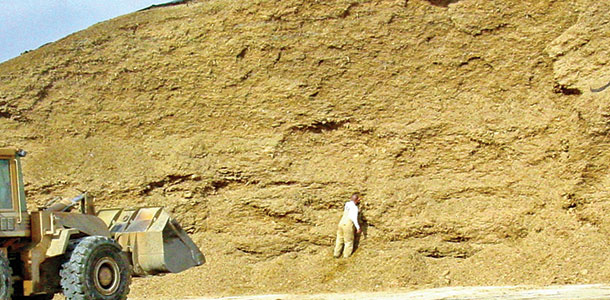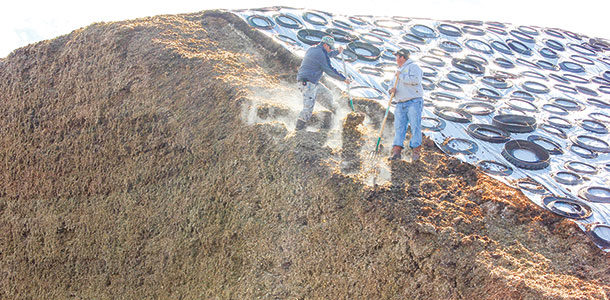There have been numerous avalanche fatalities in the U.S. the past few years, and although rarely reported, we have heard many stories about someone having a near miss with a silage avalanche.
Silage avalanche tragedies
A Nebraska newspaper reported the following fatal accident: A 53-year-old Norfolk, Nebraska, man died October 21, 2013, in a feedlot accident. Stanton County Sheriff Mike Unger said Matthew Winkelbauer died after he was buried by a large silage pile that fell in an open silage pit at Four-Quarters Feedlot east of Norfolk.
Winkelbauer, who was the owner and operator of Four-Quarters, was pronounced dead at the scene. A co-worker was seriously injured in the accident. The victim was standing in front of the feedout face, which was about 15 to 18 feet high, and the avalanche pushed the falling silage more than twice that distance away from the face.
On January 13, 2014, Jason Edward Leadingham was working alone in a bunker silo when 10 to 15 tons of corn silage collapsed on him. Jason was a silage haul-back driver for Pirtle Farms LP of Roswell, New Mexico.
Jason’s body was not recovered from the silage until about two-and-a-half hours later, and it was determined that he died of mechanical asphyxia. There was a sample bag near Jason’s left hip.
A Connecticut newspaper reported that a South Windham man died on March 24, 2015, after a pile of corn silage collapsed on him.
According to police, the accident happened when 54-year-old Donald Merchant was using equipment to remove corn silage from a bunker silo at Square A Farm in Lebanon. When Donald got off the equipment, the silage toppled on him.

Far too many bunkers and piles are just too large to be safe. It is not uncommon to have silage feedout faces that are 15 to 20 feet tall or taller. Common sense tells us that a silage face 20 to 22 feet high is much more dangerous than one that is only 10 to 12 feet high.
Preventing silage avalanche accidents
Keep in mind, we cannot stop avalanches from happening, and they are impossible to predict, but we can prevent people from being under them.
Every dairy and feedlot should have written safety policies and procedures for their silage program, and they should schedule regular meetings with all their employees to discuss safety.
Here are guidelines that can decrease the chance of having a fatality or serious accident caused by a silage avalanche.
- Never allow people to approach the feedout face. No exceptions.
- A rule of thumb is to never stand closer to the silage face than three times its height.
- Suffocation is a primary concern and a likely cause of death in any silage avalanche. Follow the “buddy rule” and never work in or near a bunker or pile alone.
- Bunker silos and drive-over piles should not be filled higher than the unloading equipment can reach safely; typically, a large unloader can reach a height of 12 to 14 feet.
- Use caution when removing plastic or oxygen-barrier film, tires, tire sidewalls or gravel bags near the edge of the feedout face.
- Do not remove surface-spoiled silage from bunkers and piles filled to an unsafe height.
- Use proper unloading technique, which includes shaving silage down the feedout face.
- Never dig the bucket into the bottom of the silage. Undercutting creates an overhang of silage that can loosen and tumble to the floor. This is a situation that is quite common when the unloader bucket cannot reach the top of an overfilled bunker or pile.
- Never drive the unloader parallel to and in close proximity to the feedout face in an over-filled bunker or pile.
- When sampling silage, take samples from a front-end loader bucket after it is moved to a safe distance from the feedout face.
- Never ride in a front-end loader bucket.
- Never park vehicles or equipment near the feedout face.
- Avoid being complacent. Always pay attention to your surroundings and never think that an avalanche cannot happen.
- A warning sign, “Danger! Silage Face Might Collapse,” should be posted around the perimeter of bunker silos and drive-over piles.
The number one priority is to send all employees home safe. If a silage program is not safe, then nothing else about it really matters at the end of the day. FG
Keith Bolsen is a professor emeritus from Kansas State University.
PHOTO 1: Do not remove surface-spoiled silage from bunkers and piles filled to an unsafe height.
PHOTO 2: Never stand closer to the silage face than three times its height. Photos courtesy of Keith Bolsen.












